Did you ever wonder where the Teenage Mutant Ninja Turtles’ characters got their names from? Well, your search is complete. Here is a brief introduction of the artists from whom the creators of TMNT took inspiration.
Teenage mutant ninja turtles,
Teenage mutant ninja turtles,
Teenage mutant ninja turtles,
Heroes in a half-shell,
TURTLE POWER!!!
Cowabunga, TMNT fans. This title track always thrilled me, it’s so full of energy. Not only was the showTeenage Mutant Ninja Turtles entertaining, it made us think about honour, discipline, obedience and most of all –ninjutsu.
Leonardo taught us to be passionate about things that we loved, Donatello taught us that machines could be cool if we used them in a good way, Raphael made me realise that there needs to be a little bit of a thug in you to protect what you love, and Michelangelo; well Mikey, my favourite, lived in the moment and ate pizzas. But never would I have guessed where their names came from.
I learnt much later that they were actually names of four of the greatest Italian Renaissance artists—Leonardo da Vinci, Donato di Niccolò di Betto Bardic, Raffaello Sanzio da Urbino and Michelangelo di Lodovico Buonarroti Simoni.
There was no apparent reason for this. The creators of the show just thought of it and decided to go with it.
“We thought about giving the turtles Japanese names but we couldn’t think of authentic-sounding Japanese names. So, we thought why not name them after Renaissance artists? We picked the names we were most familiar with and went with it,” said Peter Laird, Co-creator of TMNT, in an interview with Kidzworld.
Even though their names were introduced to us liberally, these renaissance artists were some of the most iconic individuals of the 15th and 16th centuries, who played an integral role in shaping and evolving the artistic thought at the time. They pioneered in the field of science, mathematics, philosophy, literature, architecture, and art. Not only did they create an era of thinkers but also developed ideas for generations to think upon. Their art theories have become pillars of contemporary art today, with each artist specialising in a specific area within the visual arts. Let’s analyse and understand this through some of their artworks:
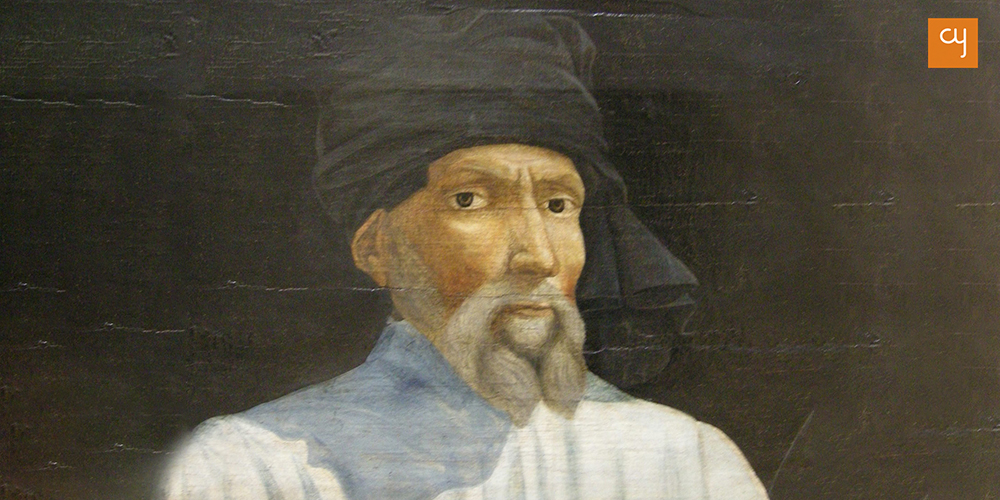
Donato di Niccolò di Betto Bardic, a.k.a. Donatello was the most important sculptor and architect of 15th century Italy having transformed art from the typical Gothic period’s flat iconography by introducing lifelike and humanist features into sculptures. Out of all these four artists, Donatello was the eldest one, being born in 1386 and he became one of the primary influencers to the other artists, his style impacting those who came after him, including Michelangelo.
He was the first sculptor of the renaissance period who re-introduced nude sculptures. His sculpture of David [from the story of David and Goliath] is considered as the first fully nude life-size sculpture of the renaissance period. Made from bronze, it stands at a height of 5 ft. and portrays a teenage David standing in a poised posture with a sword in one hand and Goliath under his foot.
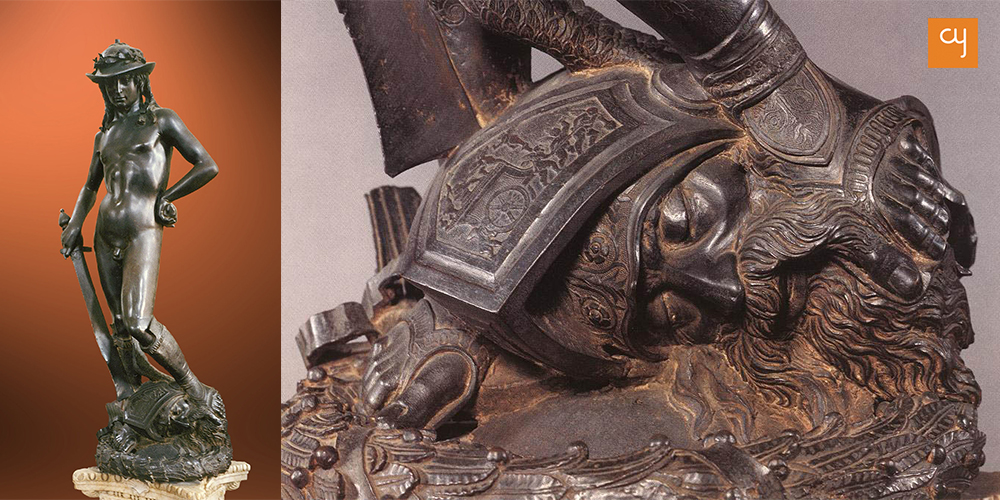

He was also one of the first two persons, the other being Filippo Brunelleschi, who invented the concept to include one-point perspective in his drawings and bas-relief for architectural works. It gave a three-dimensional effect to drawings and helped in creating an in-depth blueprint for the architectural designs. Today, we can see the immense impact of this evolution in style in how contemporary artists approach art.
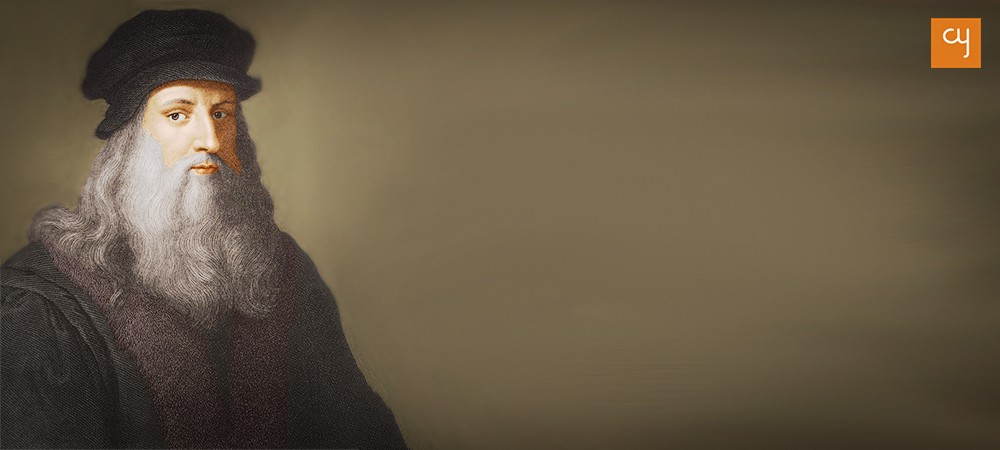
Leonardo da Vinci needs no introduction. Probably the most celebrated Renaissance artist often referred to as the ‘Renaissance Man’, Leonardo da Vinci was a creative being in all its definitions and was considered a polymath. History and reference materials found from his excavated journals bear witness to his expertise in the field of science, mathematics, architecture, painting, sculpting, music, literature, engineering, anatomy, astronomy, geology, botany and poetry.
But these renaissance artists were born in an age, devastated by the bubonic plague which killed a large population of Europe, where life was newly appreciated and thrived on thinkers and their ideas. And da Vinci’s works have inspired generations that came after him.
Let’s take his most famous work as an example to understand his scholastic capabilities. Mona Lisa, also known as La Gioconda, sits in the Louvre as one of the most beautiful paintings ever made. The style in which the painting is made is called Sfumato, the technique of allowing tones and colours to blend gradually into one another(which Leonardo himself invented)and gives the painting a soft calmness. Mona Lisa is also the first painting to feature aerial-perspective and never has a smile been spoken about more than hers. Her ambiguous expression draws the viewer in generating curiosity among them about her personality.
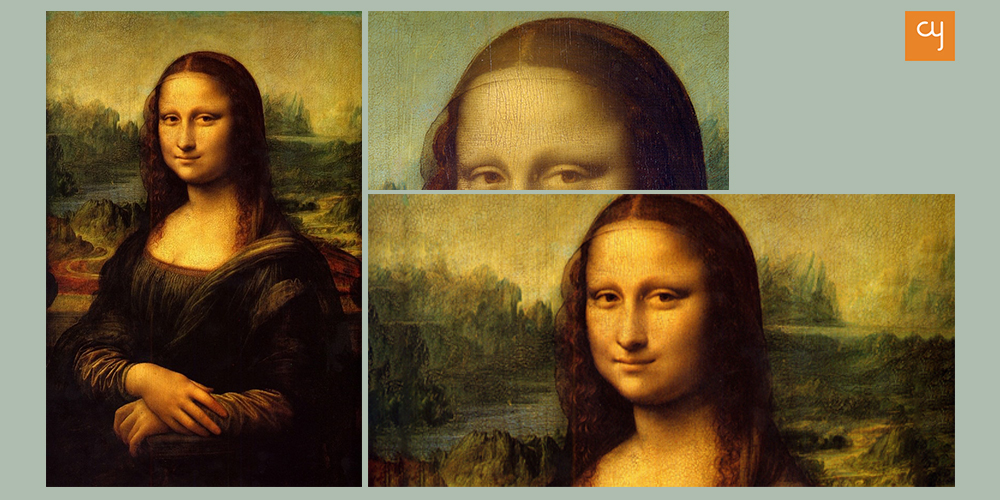
His journals have worked as a medium of reference to understand the capability of technology and human anatomy. He is regarded as the first person to study the human anatomy to its muscular formation and the nervous system, which he did by stealing and dissecting corpses. Yes, he did that, much like Michelangelo and Donatello.
His conceptualisation of a flying human suite and a propelling instrument that can fly has helped in the creation of present-day aeroplanes and helicopters.
Leonardo da Vinci’s influence on contemporary art is undeniable. His inventions in art and science were way ahead of his time but they fueled the artists, emerging in the renaissance, with inspiration and a will to be innovative with their art.

But even with his “repulsive” character, artists and observers of his art could not deny his talent and dexterity. His sculptures were extremely detailed with the musculature of the figure and their smoothness. His statues seemed so life-like that he was said to be the one who could conjure real life from stone.
Michelangelo also created his own rendition of David. His David stood as tall as 17 ft. and was made from a single slab of marble. It took him three years to complete the statue and a lot of struggle to get through Florence’s gate, but the finished product was a masterpiece. Michelangelo’s expertise in understanding human anatomy is well depicted from the musculature of each body part, especially in David. He stands in the iconic posture of contrapposto stance, much like Donatello’s David, balancing on one leg.
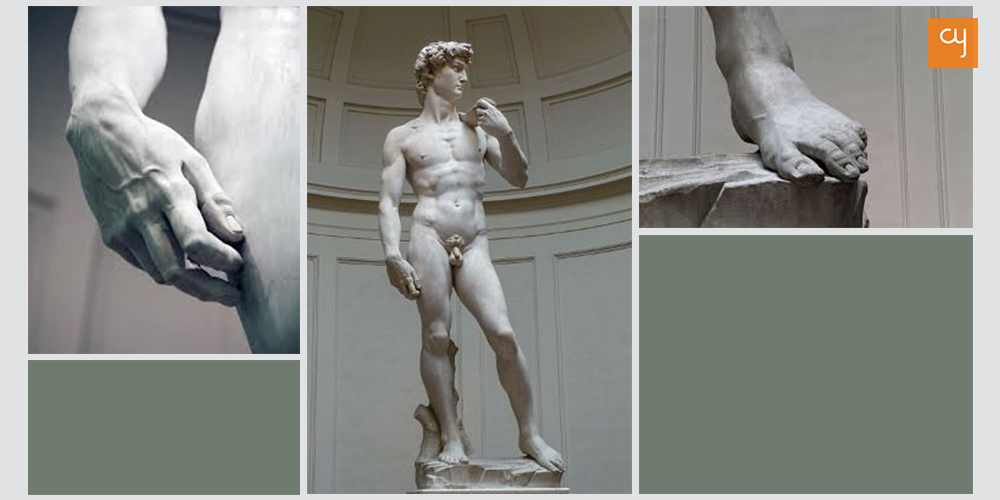
He boasted of himself as a great “sculptor” and despised being called a painter. He only painted the Sistine Chapel because he was ordered to do that by the Pope. But even when he painted the Sistine Chapel, he did it with the utmost sincerity of an artist. He single-handedly painted the entire chapel and no single figure in those paintings on the walls is similar.
Michelangelo once said, “I saw the angel in the marble and carved until I set him free.” His dedication to art has been an inspiration to artists even today.
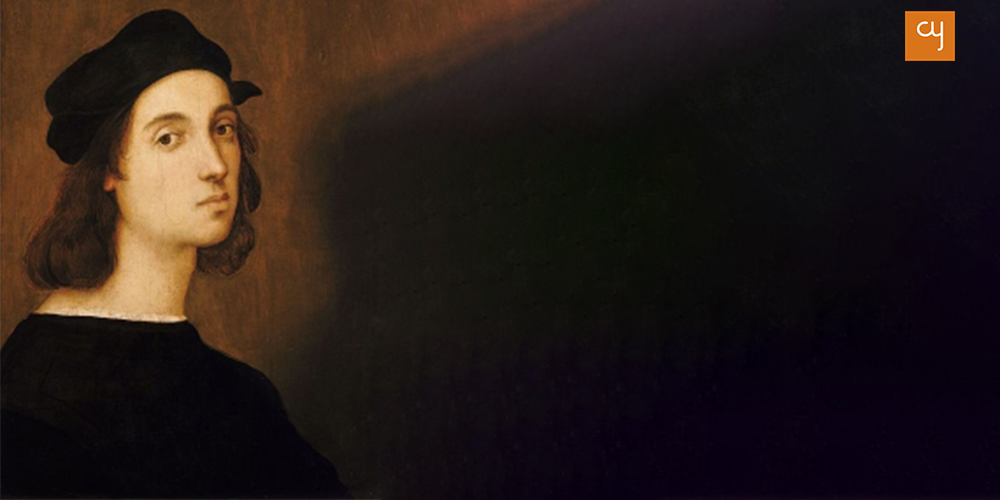
What made Raffaello’s paintings so iconic that they stood out from his contemporaries’ was his ability to give a personality to his painted figures. Each and every character he drew had a distinct emotion to convey. His paintings had a serene and harmonious quality which was enhanced by the bright colour tones and skilful brushwork.
Let’s take one of his famous works, The School of Athens, into perspective. This magnificent fresco is painted on one of the walls of Stanze di Raffaello (Raphael Rooms) which is situated in the Palace of the Vatican. It features some of the most iconic philosophers of the renaissance and high renaissance periods.
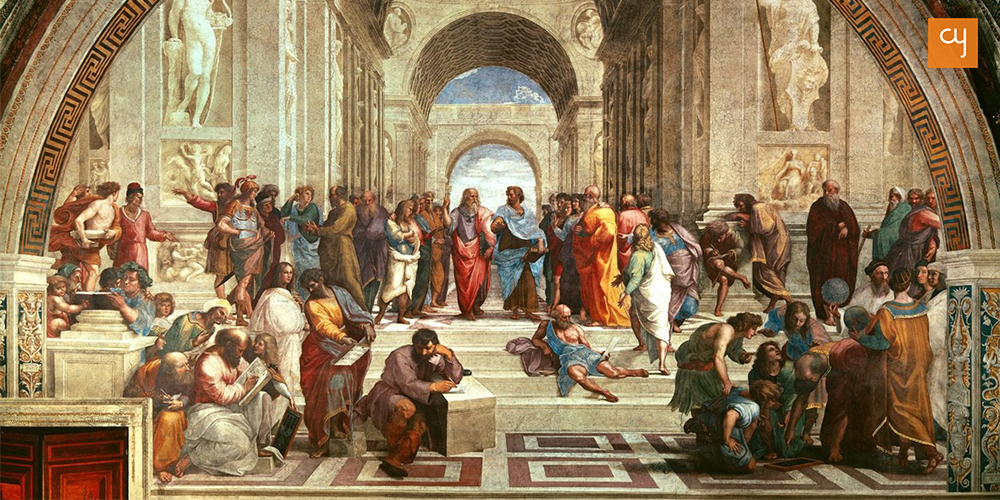
In the depicted background of St Peter’s Basilica, one can point out Plato and Aristotle in the center. On a closer look, you can find Pythagoras in the foreground, Zoroaster (holding the heavenly sphere) and Euclid on the right. Each character in the painting is conversing with someone and the enormous scenery captured by the use of perspective immerses the viewer into that scenario. The gestures and body language of the philosophers have been a constant topic of academic interpretations and debates.
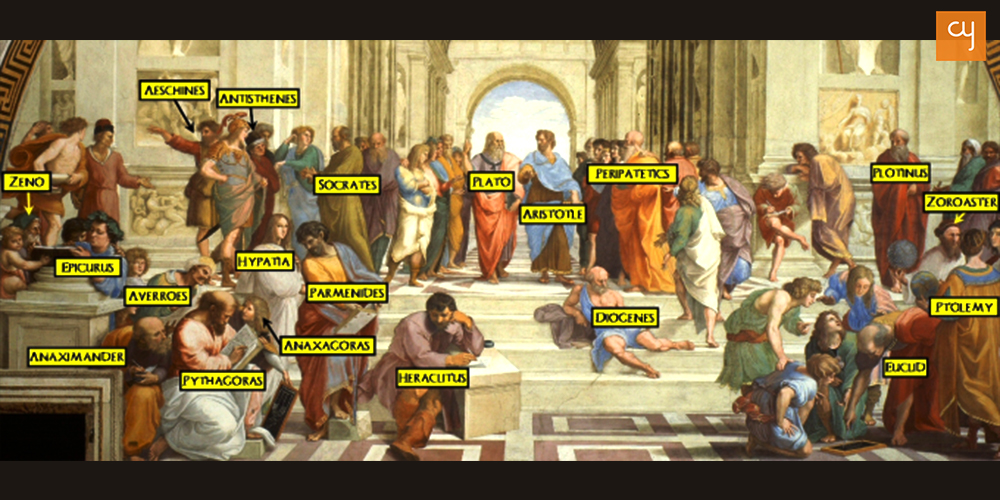
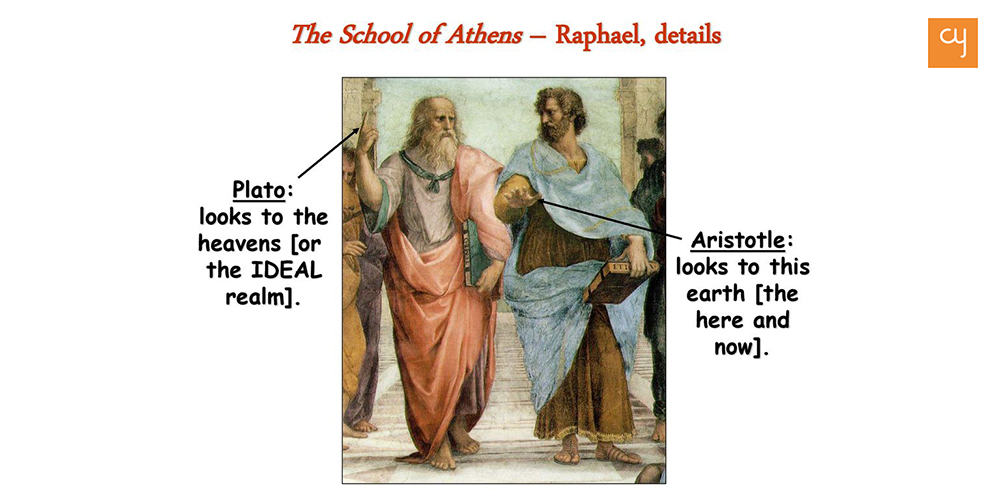
Giorgio Vasari, a renowned painter of the 16th century, in his work Lives of the Most Excellent Painters, Sculptors and Architects wrote highly in praise of Rafael when he mentioned that “those possessors of such rare and numerous gifts as were seen in Raffaello da Urbino, are not merely men, but mortal gods.” His legacy for future generations is that of an ideology to thrive for excellence and perfection in one’s art that can communicate the personality of the object to its viewers.
These artists played a significant role in evolving art because not only did they beautifully represent colours on the canvas but also opened up a whole other realm where art invited philosophical debates and realistically depicted human elements in their works.
______
For a slightly more entertaining version of this, you can check out the epic rap battle between the Ninja Turtles and these artists:
Yatra Archives

 How Tulika Books is creating impact in children’s lives through picture books
Nandini Varma
How Tulika Books is creating impact in children’s lives through picture books
Nandini VarmaAug 21, 2019
A children’s book about a boy who feels like a girl. And about a child brought up by grandfathers. These are some of the stories published by Tulika Books, who have been making children’s picture books since 23 years. Little…
 Dalgona Coffee: A worldwide social media trend about home-made café experience
Harshil Shah
Dalgona Coffee: A worldwide social media trend about home-made café experience
Harshil ShahApr 2, 2020
While the lockdown has ignited various trends on social media, one that has received a major global following is #DalgonaCoffee. With thousands of posts on its name, here’s all you need to know about the Dalgona Coffee wave. I first…
 Leonardo, Michelangelo, Raphael and Donatello—Artists or Teenage Mutant Ninja Turtles characters?
Harshil Shah
Leonardo, Michelangelo, Raphael and Donatello—Artists or Teenage Mutant Ninja Turtles characters?
Harshil ShahNov 5, 2019
Did you ever wonder where the Teenage Mutant Ninja Turtles’ characters got their names from? Well, your search is complete. Here is a brief introduction of the artists from whom the creators of TMNT took inspiration. Teenage mutant ninja turtles,…
 The call of the mountains: orthopaedic Dr Yatin Desai’s advice on trekking
Himanshu Nainani
The call of the mountains: orthopaedic Dr Yatin Desai’s advice on trekking
Himanshu NainaniMay 24, 2019
In this piece 64 year old Dr Yatin Desai, shares with CY his inspiring story of how to scale towering mountains with utmost ease and how this life adventure activity can shape human character and health. Chances are high that…



